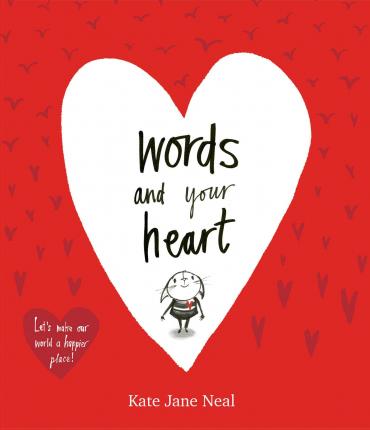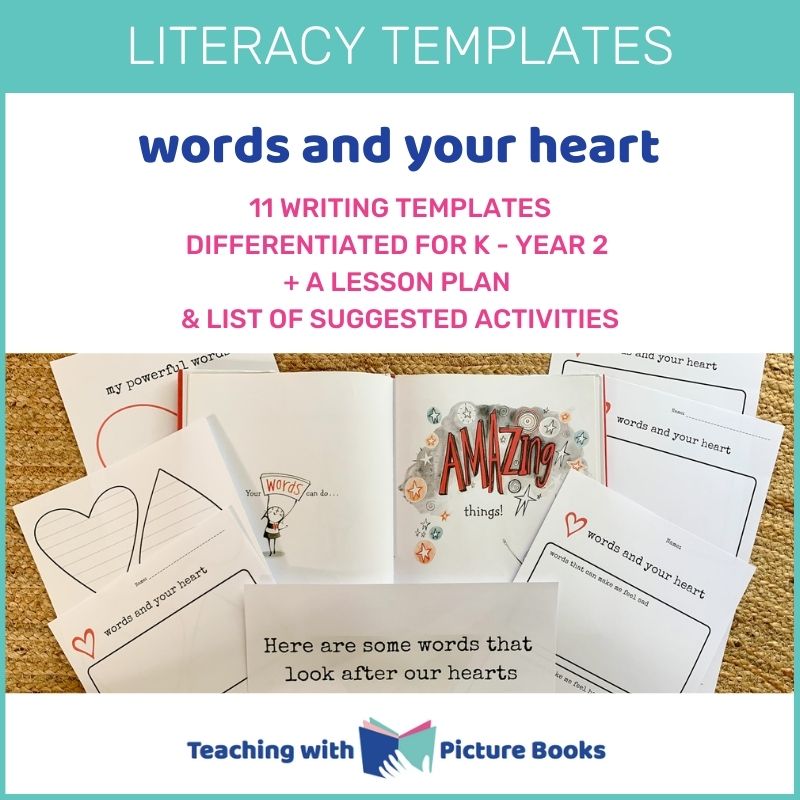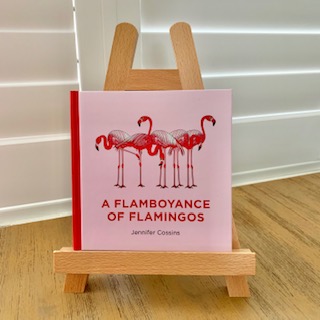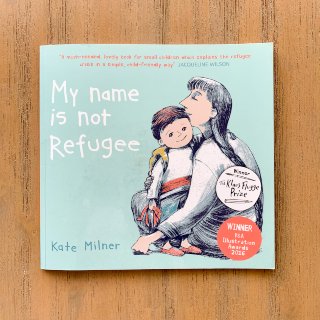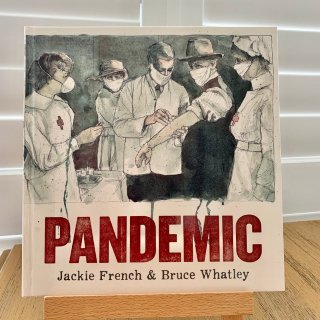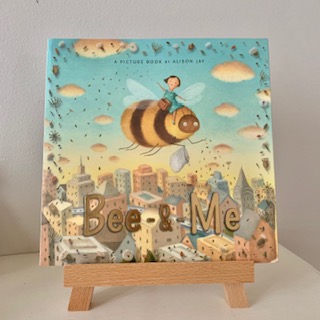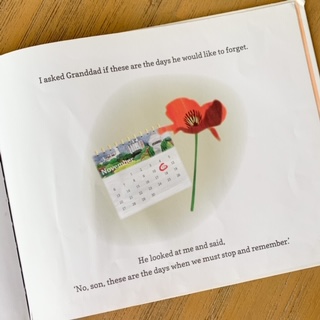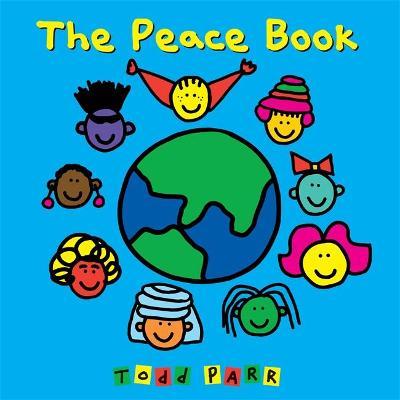words and your heart
Free lesson plan, writing template and printable word-search puzzles for kids
Best suited to:
K – Year 2
KLAs covered:
English, PDH (empathy, kindness)
Learning:
- the words we use when we talk to one another are powerful;
- words can have an effect on how we feel and on how other people feel;
- we can choose words that hurt our hearts and other people’s hearts or we can choose words that cheer and comfort people;
- our words are important and we should choose them carefully;
- which words and phrases make us feel happy and comforted?
- which words hurt our hearts and make us feel sad?
- how does it feel in your body to hear words that hurt our hearts?
- how does it feel in your body to hear words that heal our hearts?
Need to know:
- a very simple text which explores the way words make us feel and the power they hold to help or to hurt ourselves and others;
- illustrations are simple line-drawings in black, white and red;
- the book does not give examples of helpful or hurtful words but explores the idea that words in general are powerful and that they can have a significant impact on other people and on ourselves, for better or for worse;
- the book offers lots of scope for discussing helpful words and hurtful words;
Discussion Questions (before reading):
- read the title and discuss the cover: what do you think this book will be about?
- draw children’s attention to the colours used on the cover (red, black, white);
- read the author’s name and revise/introduce the words: ‘author’ and ‘illustrator’. Why do you think there is only one name on the cover?
Discussion Questions (after reading):
- can you think of a time when someone used their words to help you? Who was the person and what did they say? How did you feel? How do you think the other person felt?
- can you think of a time when your words hurt someone else? Who was the person and what did you say? What happened next? Can you remember how you felt?
- can you think of a time when your words helped someone? Who was the person and what did you say? How did it make you feel? How do you think the other person might have felt?
Activities
The children can complete these activities in their books, on blank paper or you can use our literacy templates which have been specially created to use with words and your heart.
- divide the classroom whiteboard in half (or draw two large balloons or two large hearts). As a class, brainstorm some words and phrases that might help other people and words that might hurt other people and write them on the board. Tell the children these can be specific words or sentences or just ways of asking or saying things that are respectful and kind;
- as a class, discuss the words you’ve recorded:
- who has said these words? When did you say them and to whom? How did they make you feel? Why do you think you said them?
- who has had someone say these words to them? Who said them and when? How did they make you feel? Why do you think the person said these words?
- why might these words hurt or help? How would they make people feel? When might you use them?
- children divide a page in their books – or a blank piece of paper – in two and write the headings “words that help” and “words that hurt”. They write down some words they think might hurt and some that would help. They can use the words on the classroom whiteboard or think of their own additional words;
- in pairs, children choose two or three sentences that look after our hearts to say to their partner. They sit facing one another and take turns saying the words they have chosen. Encourage (but don’t force) children to make eye contact as they practise this. They may also like to place their hands gently over their hearts as they speak. Before you begin, ask the children to notice how their bodies feel when they hear their partner use words that look after our hearts;
- children write or draw a response to the book. What was the book about? What did they learn? What was the message of the book? What was their favourite part of the book?
- children draw a large heart on a piece of paper and write the heading “my powerful words”. They write helpful words they have learnt that they intend to use – or use more often – from now on and decorate their hearts;
- create a classroom display: make a heading ‘Words that Look after Our Hearts’ and place on the classroom wall. Draw several hearts approximately 10cm wide on a piece of A4 paper. Photocopy and cut out so each child has a heart. Children write some words that ‘look after our hearts’ of their choice on their heart and colour if they wish. Invite the children to share the words they have chosen with their classmates. Attach each child’s heart to the wall underneath the heading;
- write shape poems: after brainstorming words and sentences that help and hurt our hearts, focus children’s attention on words that help and how they make us feel. In pairs, children can practise using them, taking turns. Display examples of shape poems on the whiteboard and discuss the characteristics and how a shape poem is created. Children then use a lead pencil to draw a large heart (or use one of the two templates) and use the brainstormed words to create their own shape poems;
Your free, printable word-search puzzles and writing template
These free, printable word-search puzzles for kids are great for building and reinforcing the vocabulary used when discussing words and your heart. They’re especially helpful for EAL/D students.
There are two different puzzles in this file to enable you to differentiate the activity according to the learning needs of your students.
Download and print your free writing template for use with the picture book words and your heart here (PDF).

